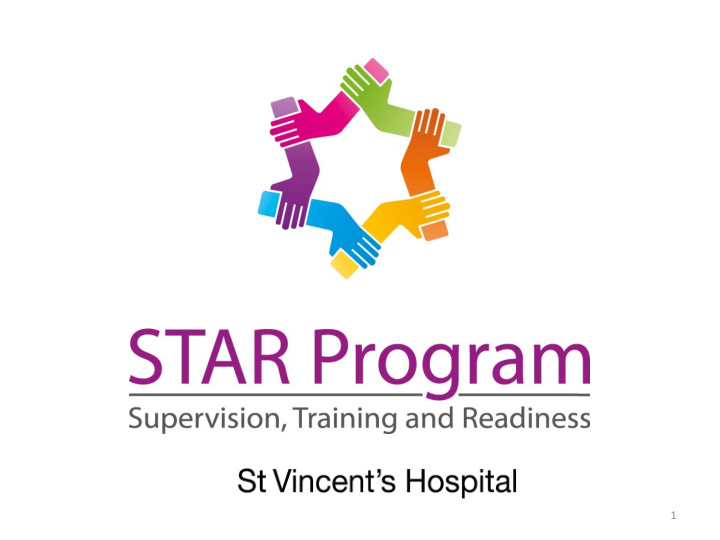



1
Overview • Definition of reflection and the reasons for its’ importance to supervision and practice • Video and interactive exercise and Group Work Discussion • Afternoon Tea • Scenario and Group Work Discussion • Facilitation of Reflection • Conclusion 2
Reflection • Reflection is an essential element of supervision. • Reflection encourages supervisees to reflect on their experiences with the client and on their practice. • Reflection encourages a deeper level of engagement with the with the therapeutic process, and thereby with the patient/client. 3
Questions of Reflection for Pip’s Video • What was the student trying to achieve? • Why did the student act as she did ? • What were the consequences of her actions for herself and the patient? • How did the student feel about the experience when it was happening? • How did the student know how her supervisor would feel about it? 4
Questions for Pip’s Video • What could the student expect of a supervisor? • How could the supervisor behave in a manner that the student would have confided in her? • What other choices did the student have? • How could they have dealt better with the situation? What have the student learned? 5
Questions for Scenario 11 • Prior to the assessment how could the student anticipate the session would go? • How did the supervisor respond? • What does this teach the student? • How does the nurse respond? • How could the supervisor respond differently? • What effect does this have on the patient? 6
Questions for Scenario • Prior to the experience what did the student expect from the supervisor? • What could the student expect from a supervisor? • How did the supervisor respond? • How could she have responded? • What will the student learn from this experience?
Case Analysis Questions • Tell me briefly about the case. • How do you feel about the issue/situation? • How do you think that x understood the situation? • Where do you have your ideas from? • Getting in touch with assumptions and values. What influenced your assessment? 8
Facilitating Reflection • Exploring differences and presenting alternative contingencies. • Before and after questions and prompts. • Before seeing a client: What are your thoughts before seeing the client? • What are your thoughts now-? Learning Questions. 9
Atkins and Murphy’s Framework for Reflection • Self Awareness • Description • Critical Analysis • Synthesis • Evaluation
Format of Reflection (Atkins and Murphy, 1995) • Awareness of uncomfortable thoughts and feelings • Identify any learning that has occurred • Describe the situation including thoughts and feelings • Analyse feelings and knowledge relevant to the situation. • Evaluate the relevance of knowledge- does it help to explain the problem? • Atkins and Murphy, 1995, P. 32 11
The Reflective Learning Model • Event • Exploration • Impact • Experimentation • Evaluation • (Davys and Beddoe, 2009) 12
Creating Change • Reflection involves examining basic assumptions in a safe learning environment. • Appreciating how each player can influence the situation • An ability to engage in a process of creative thinking so that personal experiences act as a springboard to broaden understanding • A capacity to question and to utilise this as a catalyst to change. (Fook) 2007.
Advantages of Critical Reflection in Supervision • Improved Supervisory Practice • Reduction of Oppressive Practice • Better Teamwork • Increased Accountability • Capacity for Personal Growth • Increased Confidence 14
Conclusion • Reflection encourages the practitioner to think about what they are doing. • Critical reflection is a way of improving practice and potentially using social and emotional intelligence in addressing issues of disclosure. • Integration of theory and practice. 15
Conclusion (cont’) • Schon (1987) Conditions for reflective learning in supervision: • The freedom to learn with access to supervisors who initiate and help students to see their own position and in their own way what they need to see. 16
BIBLIOGRAPHY • Atkins, S. and Murphy, K. ( 1995) Reflective practice, Nursing Standard, 9, 31-37. • Davys, A. M. and Beddoe, L. (2009), The Reflective learning model: supervision of social work, Social Work Education, vol. 28. No. 8, 919-933. • Delaney, M. (2012), Encouraging Critical reflection in Students and Supervisors, Social work Forum: Growing Field Education in Health, November. 17
BIBLIOGRAPHY • Fisher, T. and Somerton, J. (2000), Reflection on Action: the process of helping social work students to develop their use of theory in practice, Social Work Education, Vol. 19, No. 4, 387-401 • Fook, J. (1999), Critical reflectivity in education and practice in Pease B. and Fook J. (Eds.) Transforming Social Work Practice, Sydney, Allen and Unwin. • Fook, J. ( 2007),Practising critical reflection : A resource handbook, Maidenhead, Open University Press. 18
BIBLIOBRAPHY • Osmond, J. and Darlington, Y. (2005), Reflective analysis: Techniques for facilitating reflection, Australian Social Work, vol. 58. No. 1, 3-14. • Schon, D. (1987), Educating the reflective practioner, Jossey Bass, San Francisco
Recommend
More recommend